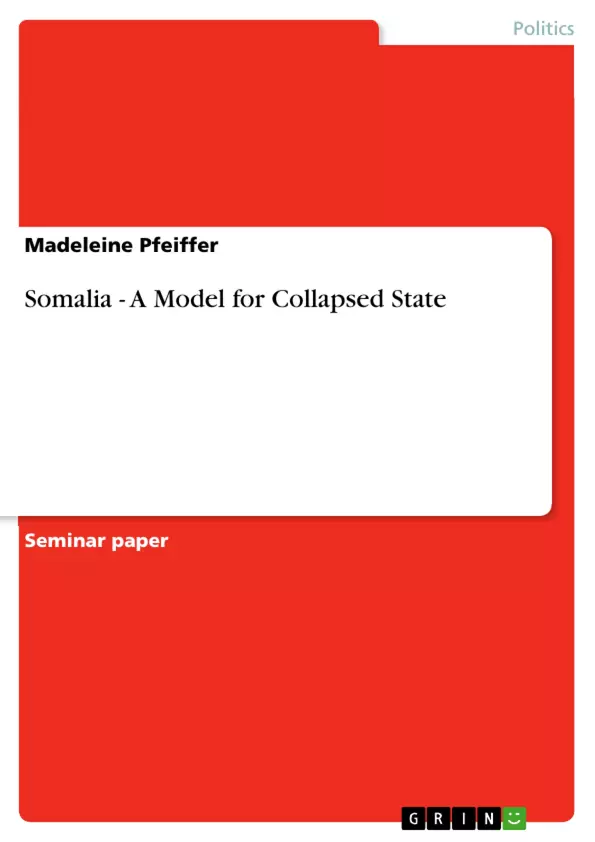Nation-states are more numerous than they were half a century ago. In 1919 there were fifty-nine nation-states. In 1950 that number climbed up to sixty-nine. A decade later, after much of Africa gained independence, the number of nation-states reached ninety. The constant increase of independences in Africa, Asia and the Oceanic territories in addition to the implosion of the Soviet Union, have brought the total number of nation states in 2002 up to 192. Given these explosive numbers, the indigenous fragility of many of the new states and the inherent navigational dangers of the post Cold War economic and political surroundings, the possibility of failure among some of these new nation-states remains ever present.1Because they can no longer provide positive political goods to their citizens, nationstates fail. The government respectively the nation-state itself becomes illegitimate. At the moment only a few of the worlds nationstates are categorized as failed or collapsed. In spite of that, several dozen are weak and walking at the edge of failure. The aftermath of 9/11 led to the assumption that failed states harbour nonstate actors like warlords and terrorists which makes it necessary to understand the drivers and dynamics of nation state failure for the war on terrorism.
This paper is an attempt to analyze which factors have led to the crisis of state collapse in Somalia and why does state collapse continue to be the order of the day?
The first part of the paper is supposed to give an overview of Rotberg’s classification of state failure and state collapse. It will provide some general definitions and presents the indicators of the above mentioned terms
The second part examines the Somali situation of collapsed state mostly in a chronological order. In a conclusion at the end, the question of prolonged state collapse in Somalia will be summarized.
Inhaltsverzeichnis (Table of Contents)
- Introduction
- The Nature of Nation State Failure and Collapse
- Definition of Failed State
- Decline of political Goods
- Definition of Collapsed State
- Conflict Process
- Pre-1991 Period
- Post- 1991 Period
- Foreign Intervention
- Post- Foreign Intervention Period
- Conclusion
Zielsetzung und Themenschwerpunkte (Objectives and Key Themes)
This paper aims to analyze the factors contributing to the collapse of the Somali state and explore why state collapse continues to persist. It examines Rotberg's classification of state failure and collapse as a theoretical framework to understand the Somali situation.
- Defining and understanding the concepts of state failure and collapse
- Analyzing the decline of political goods in Somalia
- Exploring the role of conflict in the collapse of the Somali state
- Examining the impact of foreign intervention in Somalia
- Analyzing the persistence of state collapse in Somalia
Zusammenfassung der Kapitel (Chapter Summaries)
- Introduction: Introduces the concept of state failure and collapse in the context of the increasing number of nation-states and the importance of understanding its drivers for addressing the threat posed by non-state actors.
- The Nature of Nation State Failure and Collapse: Defines and explains Rotberg's classification of state failure and collapse, outlining indicators such as persistent violence, lack of control over borders, and government oppression.
- Conflict Process: Provides a chronological overview of the Somali conflict, including the pre-1991 period, the post-1991 period, the impact of foreign intervention, and the post-intervention period.
Schlüsselwörter (Keywords)
State failure, state collapse, Somalia, Rotberg's classification, conflict, foreign intervention, political goods, security, human security, nation-state, non-state actors, warlords, terrorism.
- Citation du texte
- Madeleine Pfeiffer (Auteur), 2006, Somalia - A Model for Collapsed State, Munich, GRIN Verlag, https://www.grin.com/document/66622



